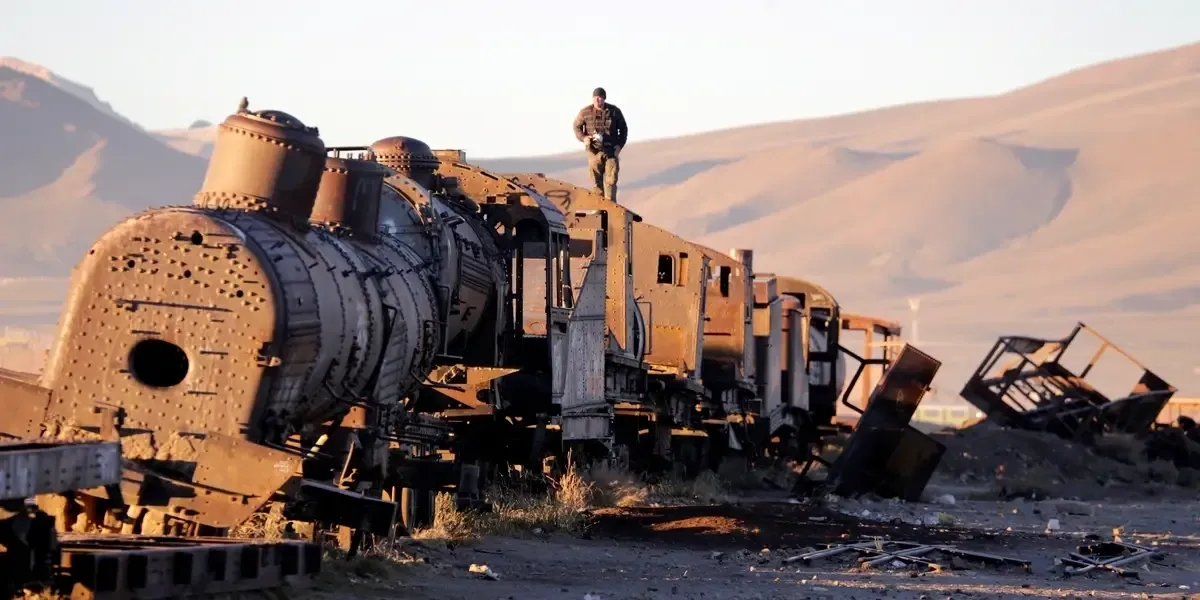If you’re planning to visit the train cemetery in Uyuni, Bolivia, here’s a guide on how to get there and what to expect:
- Getting to Uyuni: If you’re driving independently, head to the town of Uyuni. Seek directions locally instead of relying solely on Google Maps, as the cemetery may not be well-marked. Uyuni is accessible by bus from major cities in Bolivia, such as La Paz and Sucre.
- Location: The train cemetery is located on the outskirts of Uyuni. While there’s only one sign indicating its location, locals are familiar with it. You can ask for directions from residents or your accommodation.


- Tour Companies: Many tour companies include a stop at the train cemetery as part of their itinerary, often after visiting the salt flats. If you’re joining a tour, check with the tour operator about the schedule.
- Timing: To avoid crowds and experience the best lighting for photography, consider arriving early in the morning (before 8 am) or later in the evening (after 5 pm). This allows you to witness the train graveyard against the backdrop of the rising or setting sun, creating a captivating atmosphere.
Exploring the train cemetery offers a unique opportunity to witness the remnants of Bolivia’s railway history and the passage of time amidst the hauntingly beautiful landscape.


The flat terrain surrounding the train cemetery in Uyuni, Bolivia, often offers stunning views of the sky, especially during sunrise or sunset. The interplay of colors in the sky contrasts beautifully with the brown rusty hues of the old trains, creating a mesmerizing sight for visitors.
Most of the trains at the cemetery date back to the early 20th century and were originally imported from Britain. At that time, Uyuni was envisioned to become a significant railway hub, connecting various cities and serving the booming mining industry. However, these ambitious plans never fully materialized due to a decline in the mining sector and ongoing disputes with neighboring countries. As a result, the trains were left to rust away in the vast expanse of the Bolivian landscape, becoming a poignant reminder of unrealized dreams and changing fortunes.




The trains at the cemetery exhibit significant wear and tear, a result of exposure to salt and the harsh winds of the Bolivian landscape. This exposure contributes to the weathered appearance of these massive steel structures, adding to their allure and mystique. Visitors can explore over 100 train cars, each with its own distinctive design and history. Additionally, these transportation relics serve as canvases for numerous graffiti artworks, adding a colorful and artistic dimension to the industrial landscape of the train cemetery.

